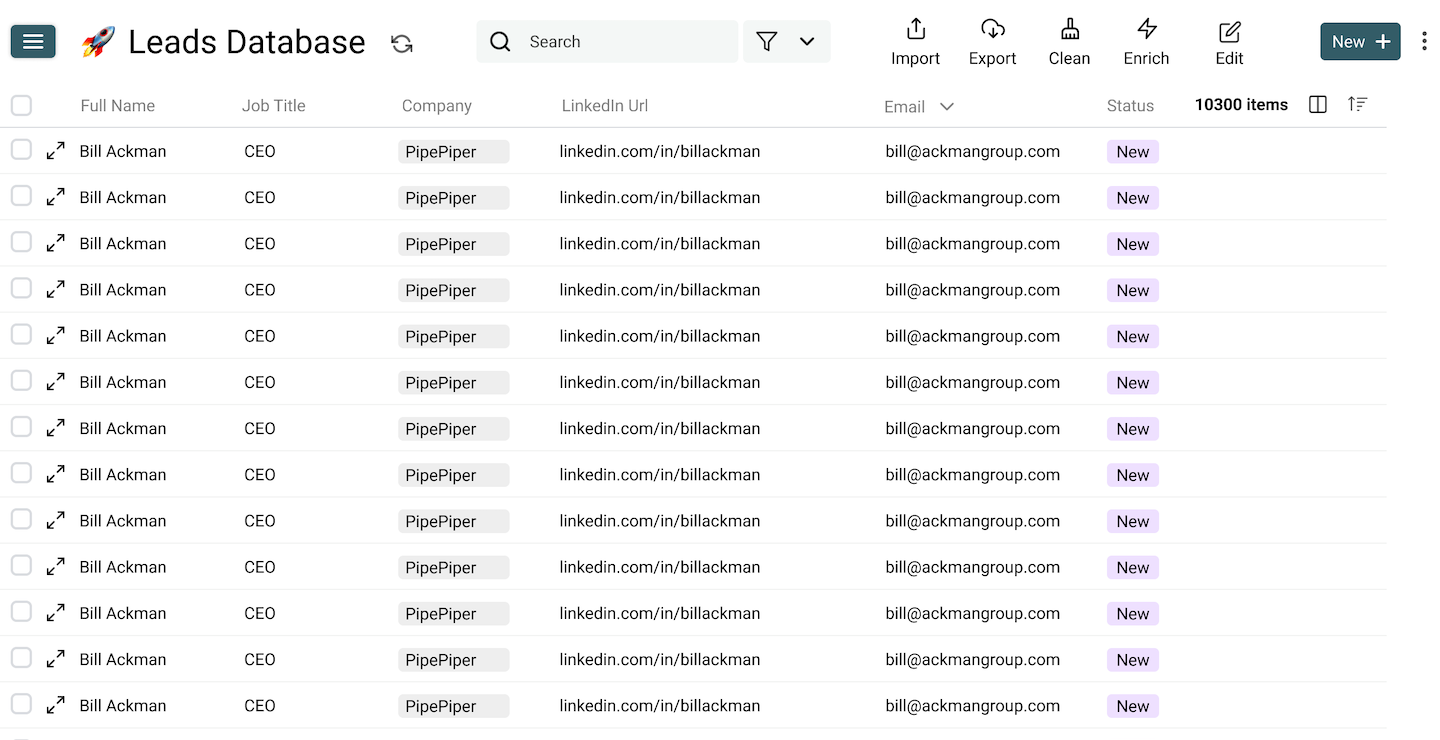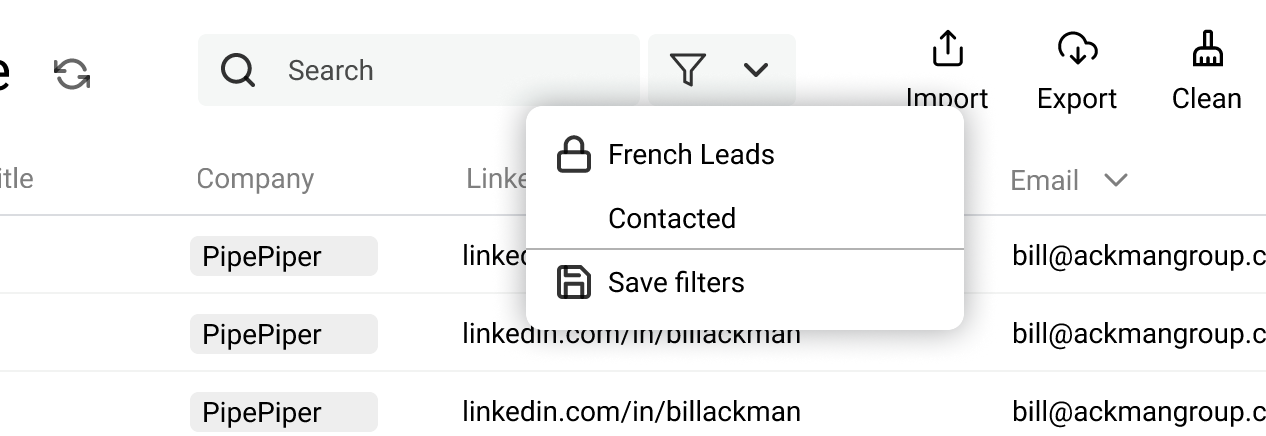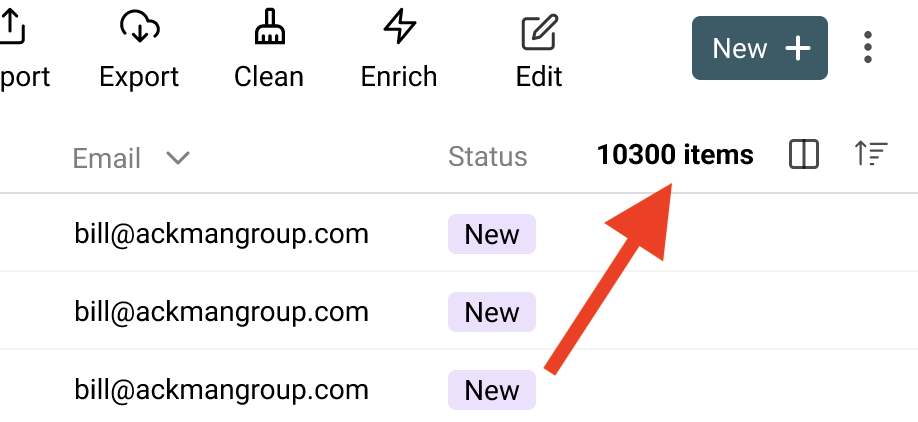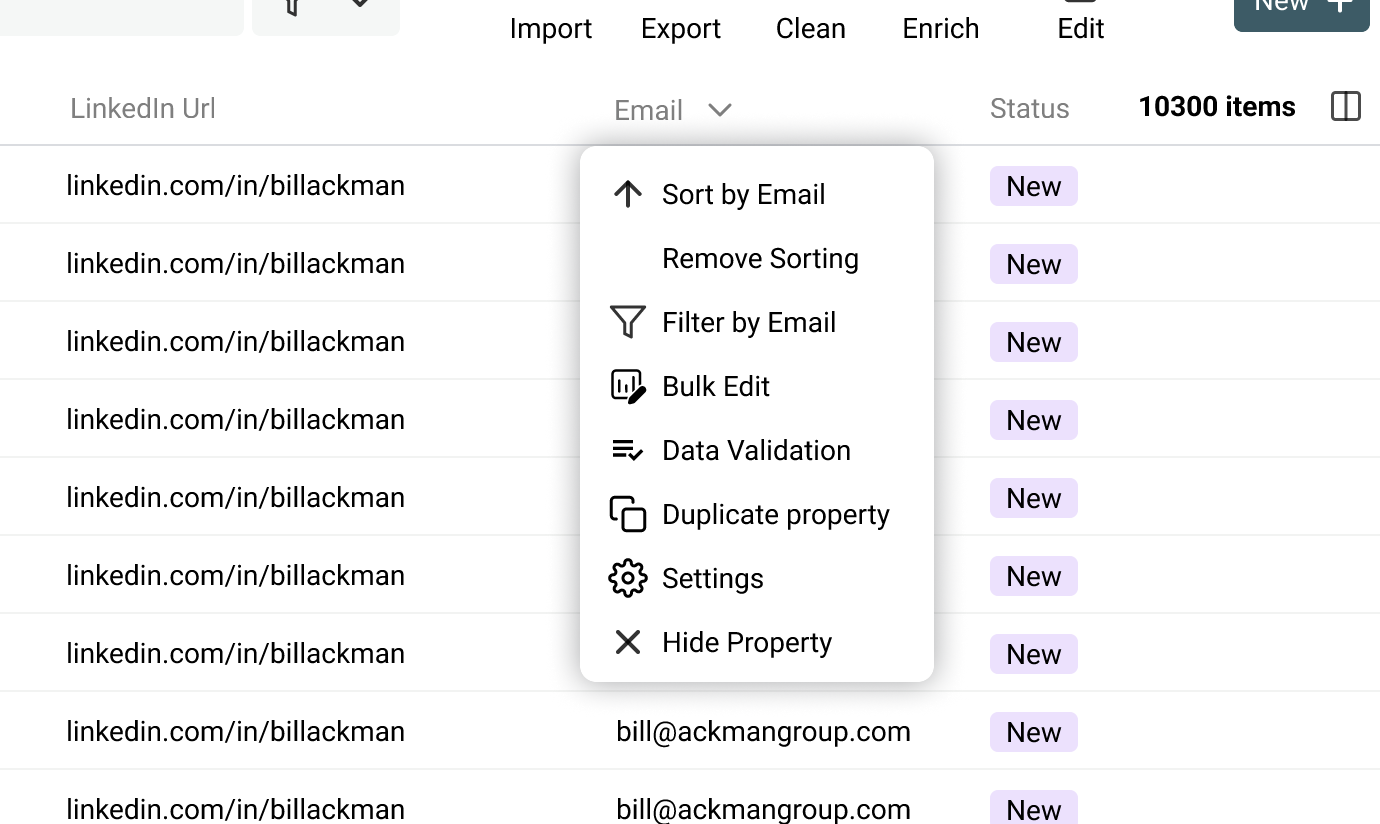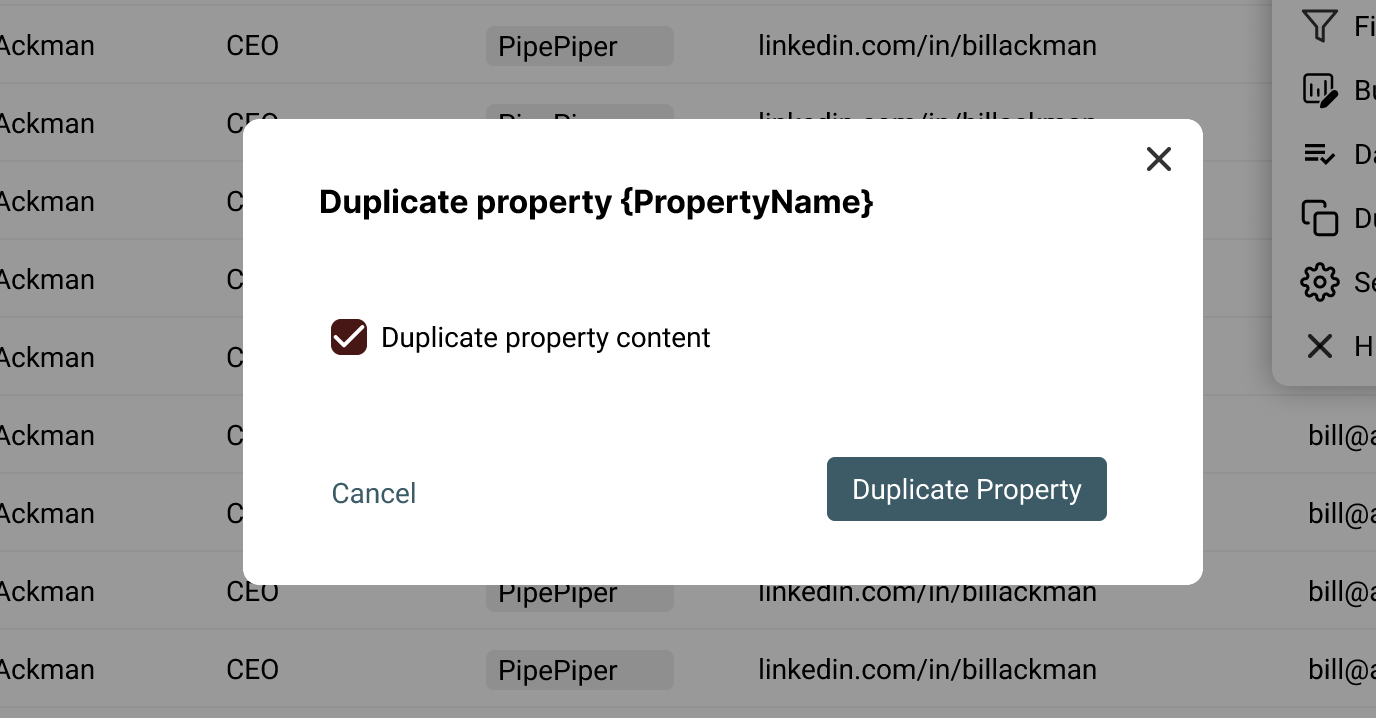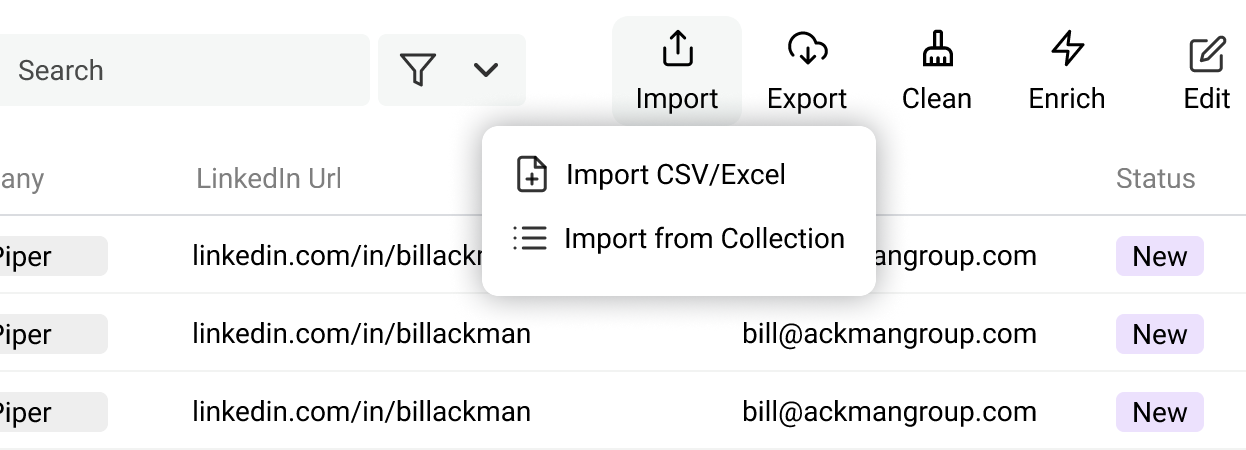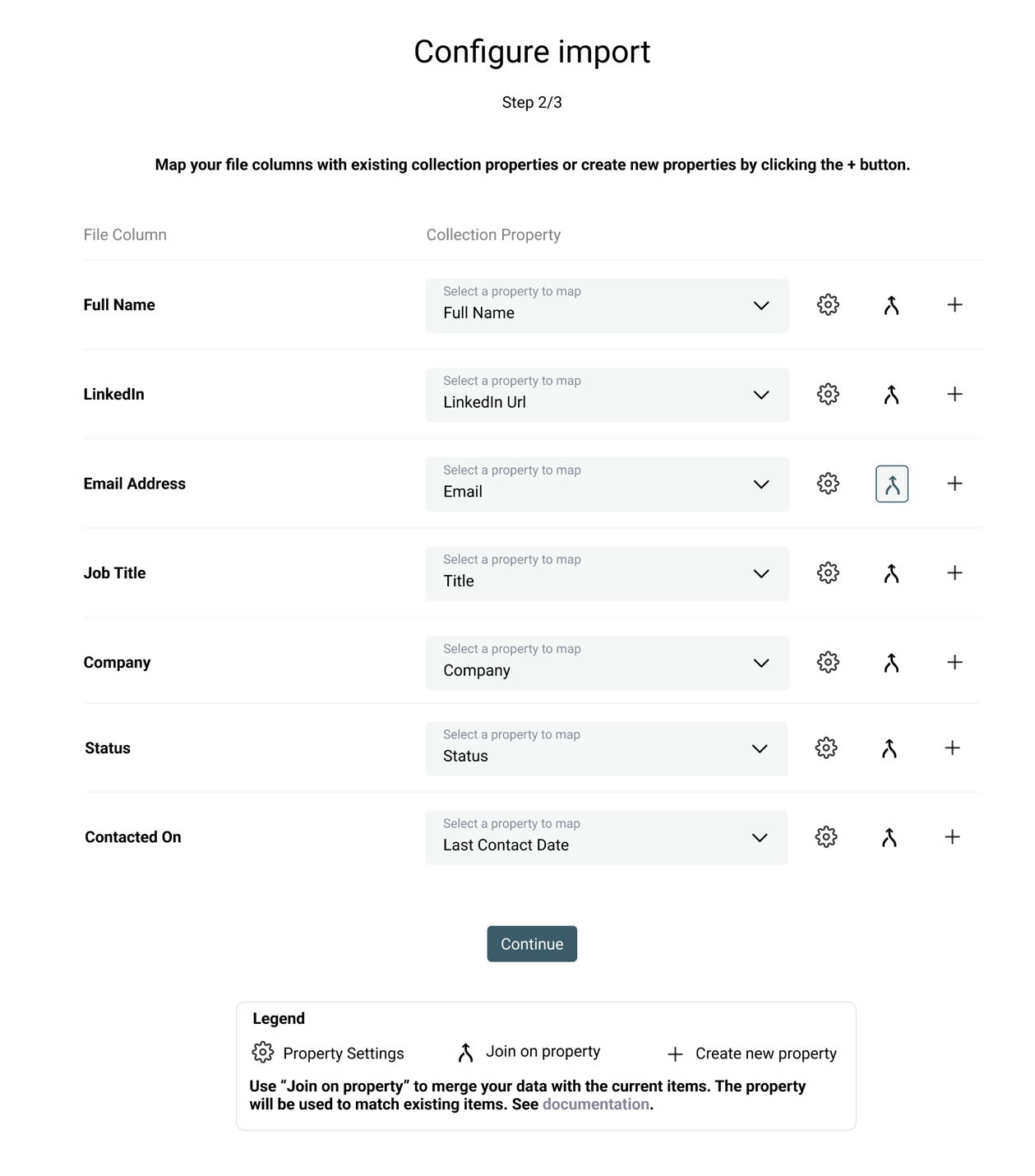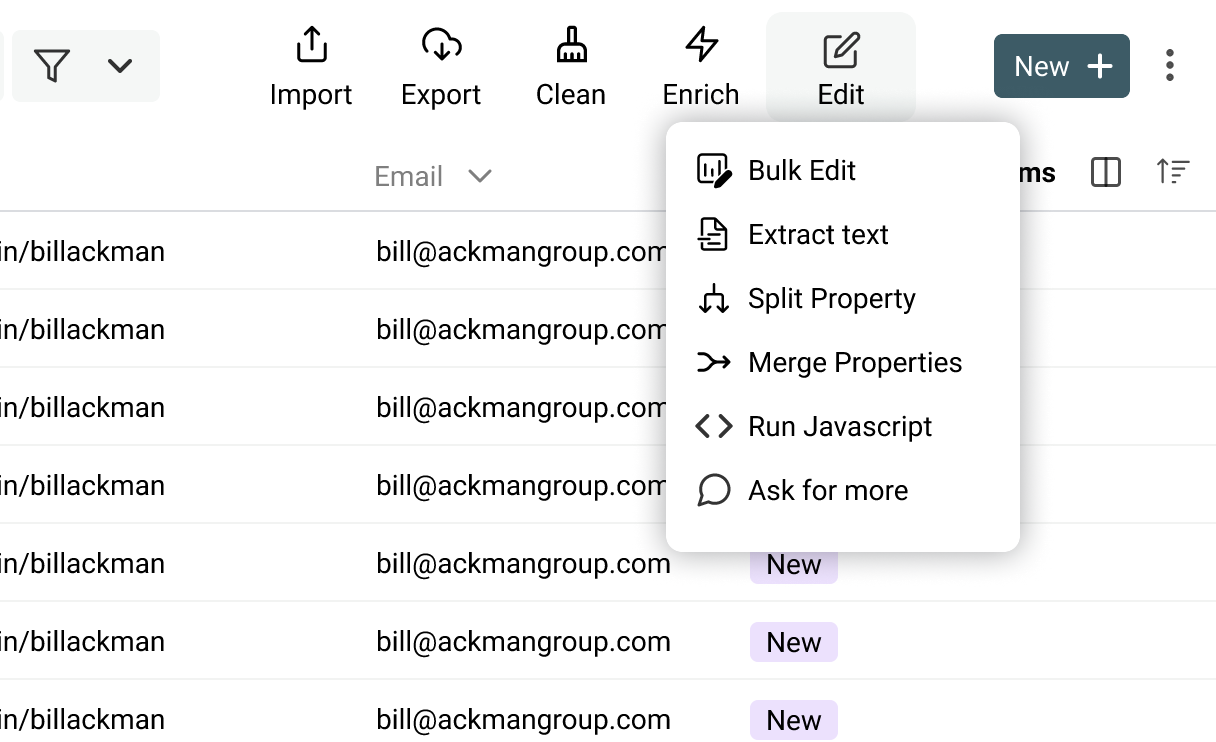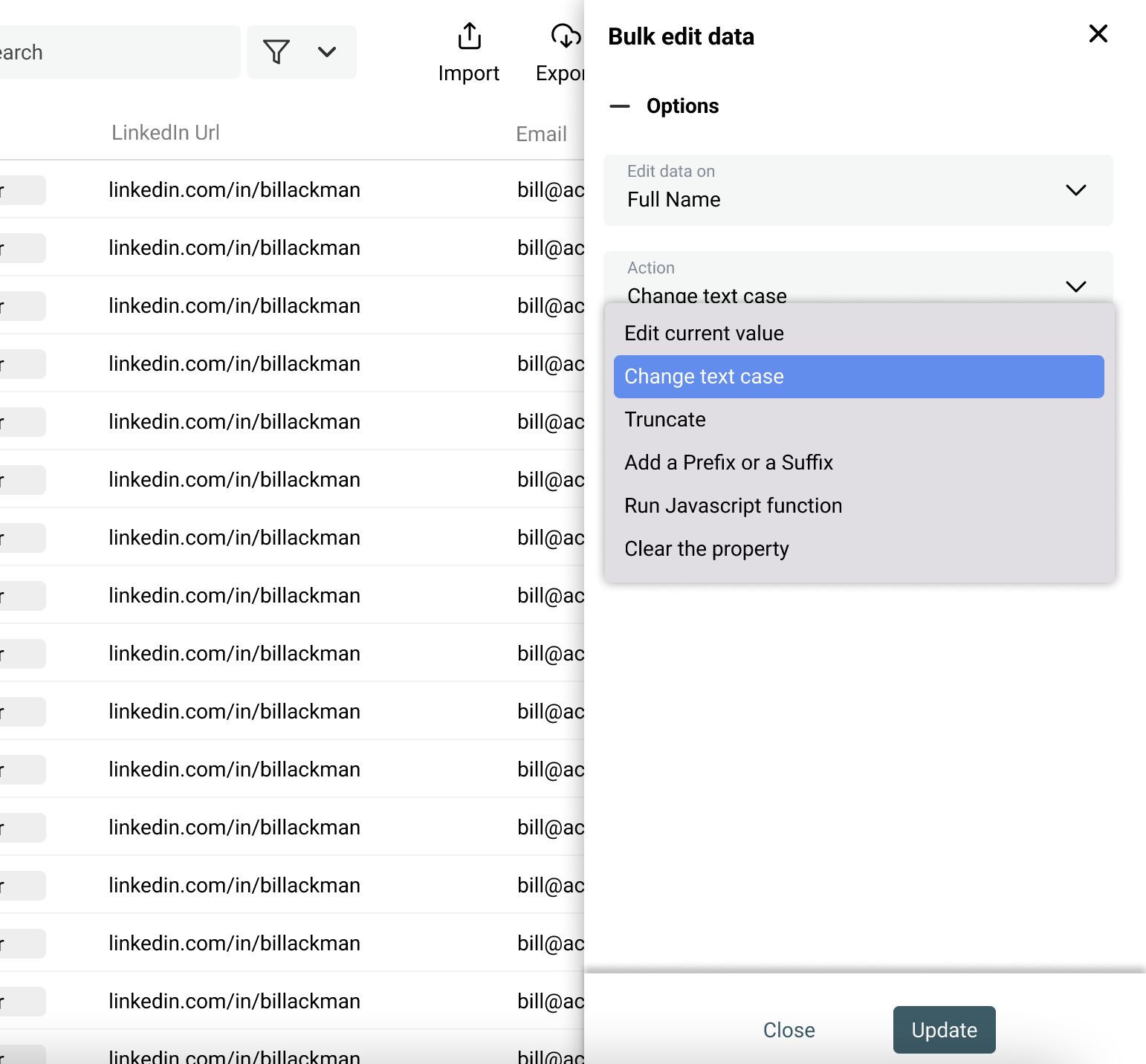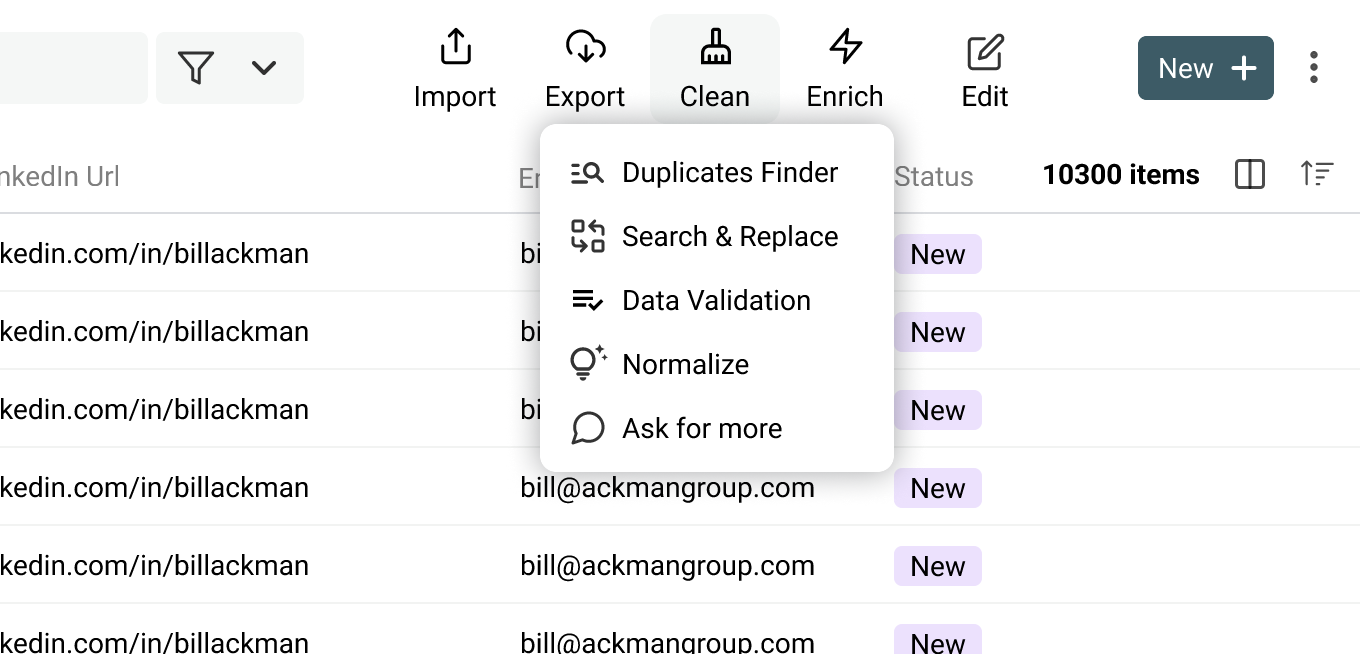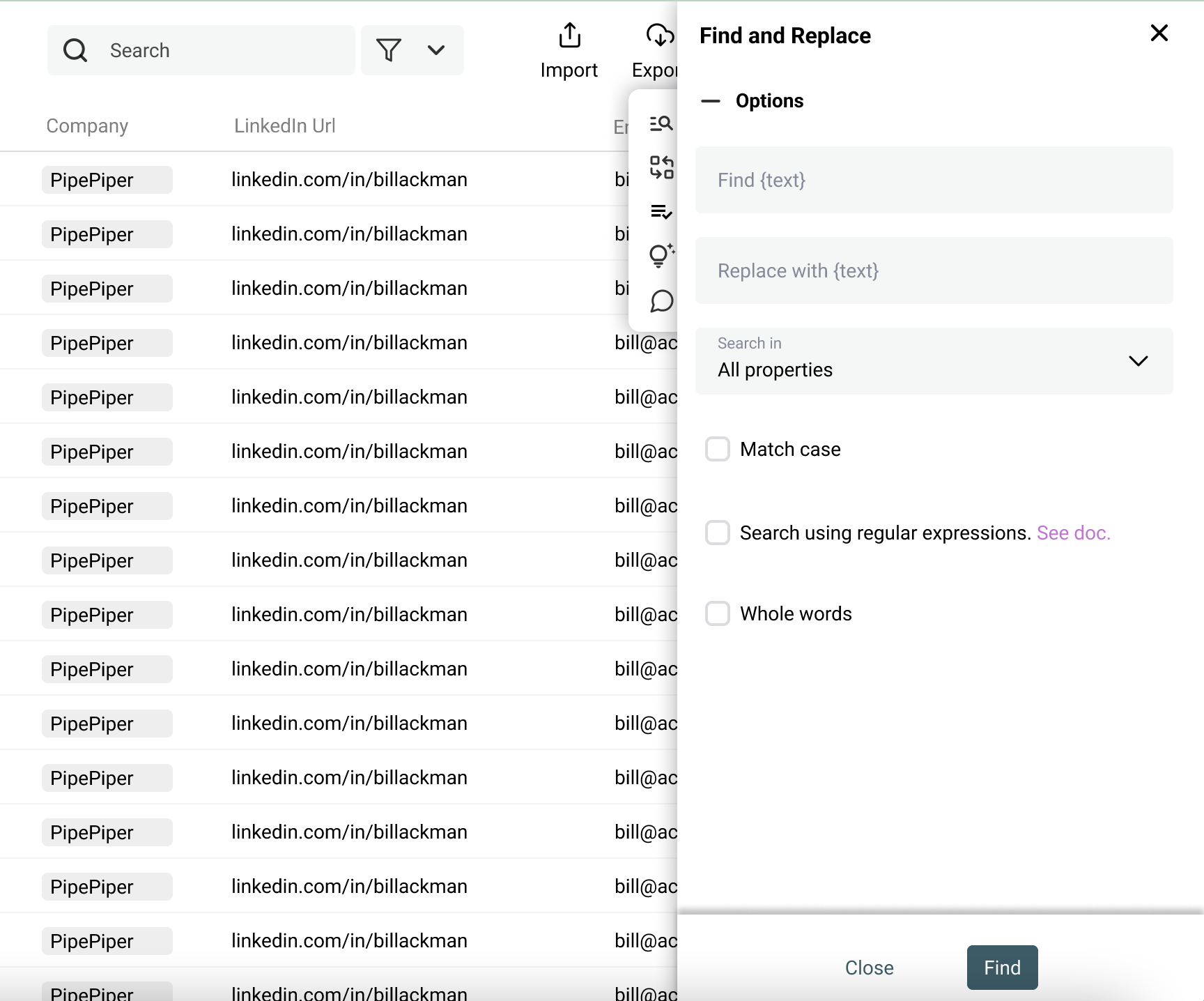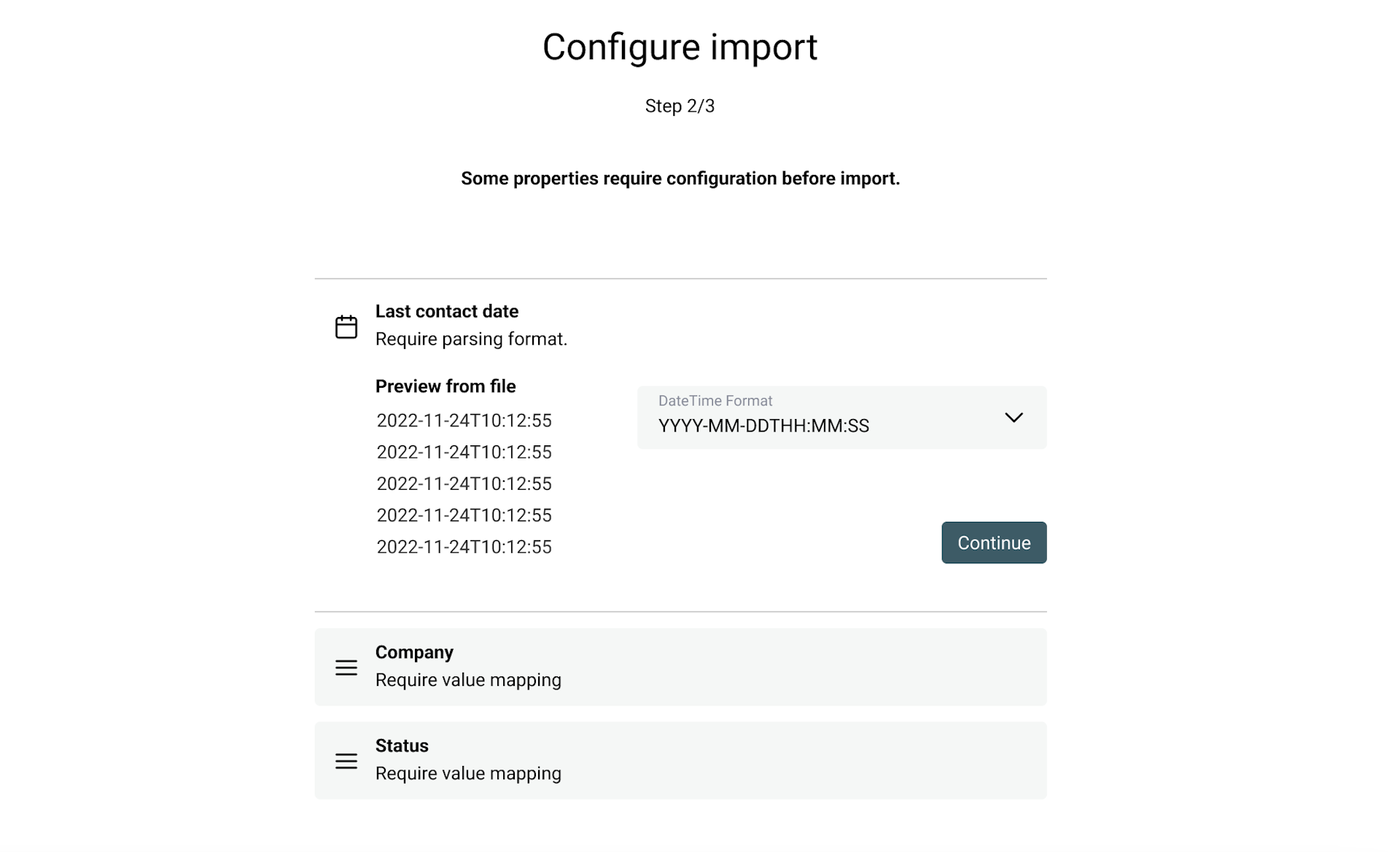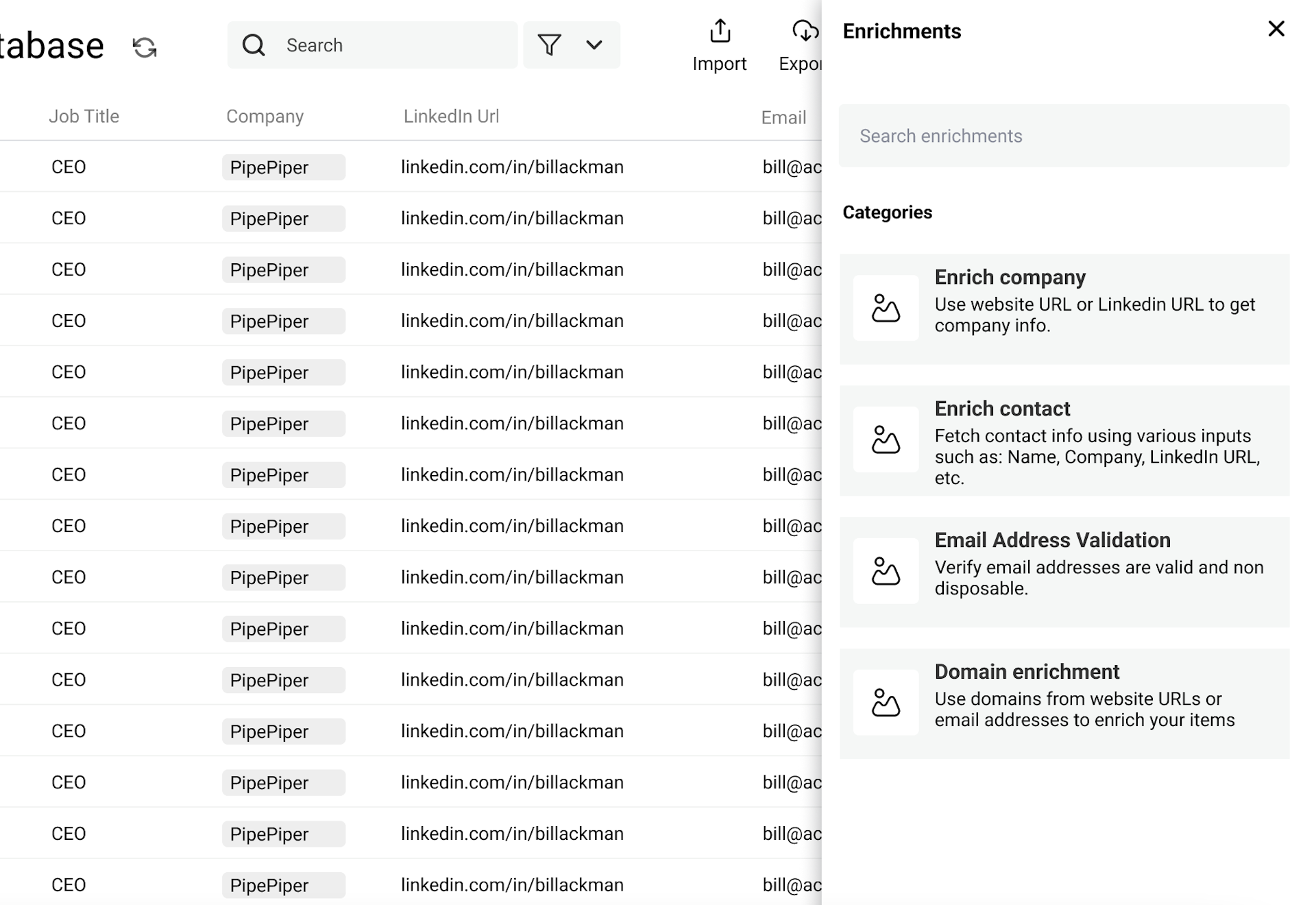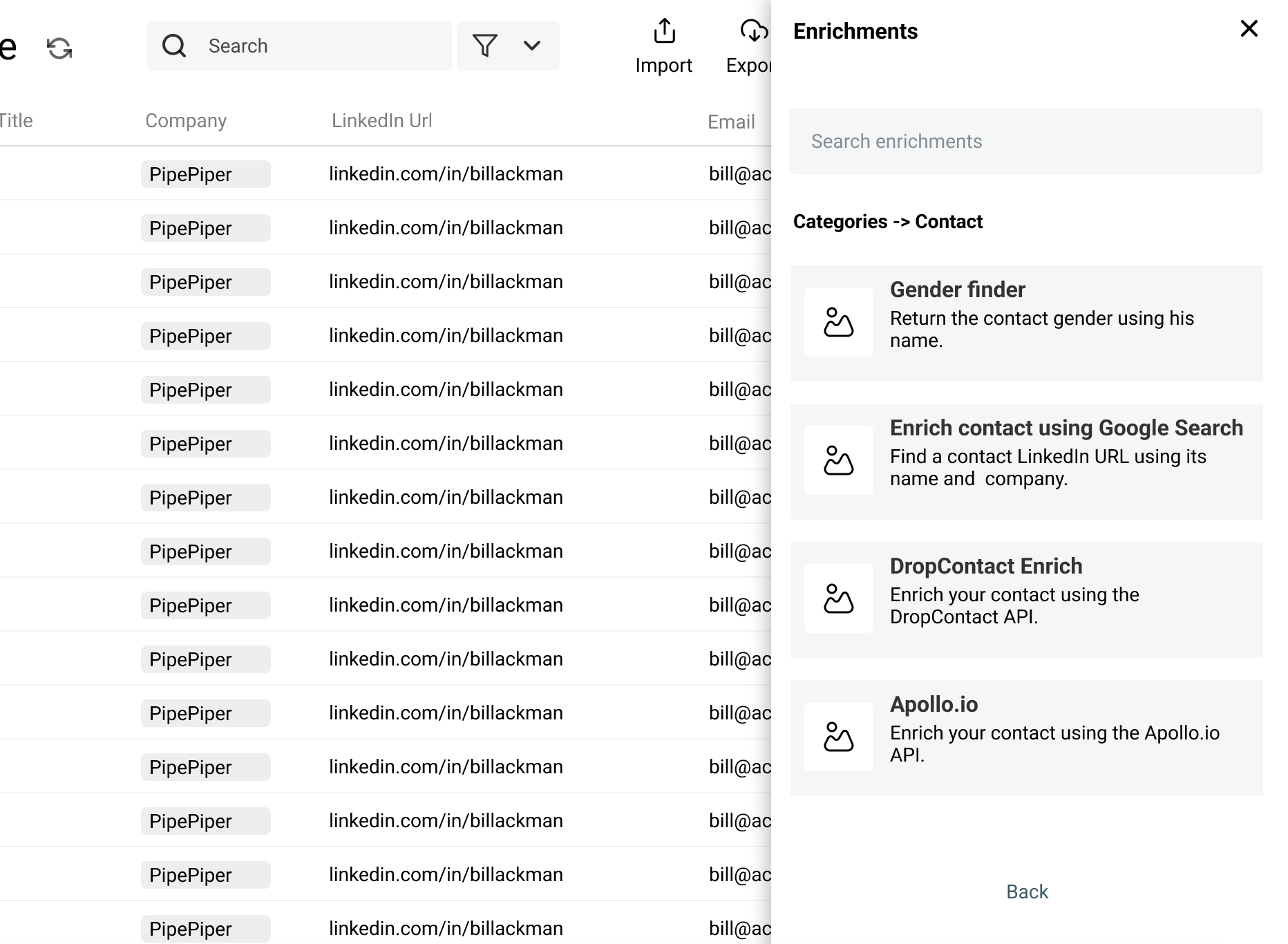Outreach (cold emailing, LinkedIn marketing automation) has changed in the past years. Spamming no longer works. You will be flagged in no time if you send too many emails or LinkedIn invite requests. Quality is key!
A successful outreach campaign means contacting fewer leads but focusing on your ideal customer profiles.
Datablist will help you with that. It will be the best tool to manage and clean your lead lists! In this market, my number one competitor is Google Sheets. CRMs are still part of the toolset but the CRM comes after in the process.
To succeed, Datablist must be better than Google Sheets at managing your lead lists. For that, I want to focus on four directions:
- Improving the current UX to access the main features quickly.
- Add data cleaning and bulk edit features.
- Add new property data types to add structure and validation to your data.
- Focus on the lead generation use case and add enrichment features and integrations.
In this post, I share with you my current "vision" for the next developments on Datablist.
A sneak peek at the next iteration
I've created a Figma prototype to brainstorm the new design. You can access the prototype here.
How to use the prototype:
- Click anywhere to see clickable areas
- Click on "Leads Database" in the sidebar to go back to the main listing
- It is not "responsive". The screen size is fixed.
#1 - New Header
I will redesign the header around user intentions. The new design will be simpler and self explanatory.
Search and filters
The text search input and filtering features will be grouped in a single space. And you will be able to save your filters! 🥳 I understand this is an important feature to create segments in your collection.
Visible items count
In the current Datablist design, some actions and information are visible only after selecting items. The item count is displayed when you click "Select all". And enrichment actions are shown for selected items.
I have to admit that from my discussion with users, nobody understands it 🥲. The "how can I get the number of items?" is a recurring question.
Stop with hidden features, and I just have to put the information in the design without overwhelming the user.
I don't want to take a line in the bottom or from the header just for that. The item count will be on the "columns" line. And you will be able to scroll horizontally more than the end of the data to read all the columns.
#2 - Quick property actions
A context menu will be available on a property column header. You will be able to sort, hide the property and access its settings.
Clicking on "Filter", "Bulk Edit", or "Data Validation" will open the corresponding module and pre-select the current property.
And you will be able to duplicate a property (with or without its data). This is useful to keep a backup of a property while cleaning it.
#3 - Import data from another collection
People like spreadsheets because they are adaptable. You duplicate a worksheet when you don't want to mess with your primary data, then you just copy and paste the results to consolidate your primary worksheet.
I've noticed a pattern to export a collection as CSV and import the CSV into another collection. For creating a master list from several collections for example. Or when you clone a collection to work on it and you don't want to risk messing with your data until your work is done.
Datablist has a "clone collection" feature but it is currently not possible to import items from one collection to another one.
A simple "Import from collection" option will be added. After selecting the collection, the user will land on the property mapping screen. On this screen, he will be able to select a property to import with a "join" to merge data or without a "join" to add the items to the collection.
#4 - Easy joining operation during import
Consolidating several listings into a single "master collection" is a key feature.
B2B services to enrich your leads and third-party tools to verify email addresses generate CSV files. To consolidate this data with your master list, you want to import your CSV and "join" on a unique identifier. This is usually an email address, a website URL, or any identifier.
This feature exists on Datablist through a configuration on your properties. When you set a property with "Unique values", Datablist automatically performs a "join" during an import in a collection with existing data. Enabling the "join" without going through a setting in a property will streamline the process.
When you will import a CSV/Excel file or the data from another collection into a collection that is not empty, a "join" button will appear near the collection properties. And the new data will be joined with the existing data.
#5 - Bulk edit and cleaning features
When dealing with scraped data or exports from multiple sources, you end up with "dirty data". I've been asked for better ways to edit items.
On spreadsheet tools, you can bulk edit data using functions. And on other software like CRMs, you have actions to bulk edit the data directly on properties.
Property names have meaning in listings. For a product catalog, the "description" property is expected to be the "description" property when you import it back into your system. And for lead management, your CRM works with defined properties.
So for Datablist, I choose to work directly on the property. It will still be possible to create a property and define its value as a function of other properties. But the main way to clean and edit data will be directly on the properties.
I categorize editing features into two groups:
- Editing inside a property - This is classic editing. For example, you want to set a value for a set of items. Or you want to set the text in uppercase. And if you perform a "Find & Replace" action, you end up with the same properties as before the action.
- Editing that creates or removes properties - Extracting a pattern from a text into a new property or splitting a property using a character (comma, semicolon) to have 2 properties for example. And it works the other way around to combine several properties into a single one. Such editing features will create or edit your collection properties.
Editing features will be spread between an "Edit" and a "Cleaning" menus.
Edit menu
Bulk Edit
With Bulk Edit, you will select a property and the edit action to perform. The first edit actions will be to set the same value to all the items, to add a prefix or a suffix, and to change the text case. The list of actions will grow with your feedback.
Extract text(s)
This action will let you extract a pattern from the text of a property into a new property. For example, to extract the domain from email addresses. Or to find the email addresses or website URLs from a text.
Merging properties into a single one
With this action, you will be able to create a single property from the texts of two properties. You will select the "delimiter" to concatenate the text and Datablist will do the rest.
For example, if you have several "notes" properties and you want to merge them using a "new line" delimiter. The result will be a single "Notes" property and the texts will be concatenated with new lines.
Split a Property
This is the reverse of the merging above. Select a character to split the text into two or more properties. This feature would work well with the extracted texts and the Duplicates Finder.
With the Duplicate Finder, if you have combined conflicting values in a single value (with a "comma") during the duplicate merge, you would be able to split your data into several properties.
And it works also with the extracted text(s) feature. If you extract email addresses from a text, the results will go into a single property. With this "split" feature, you will be able to have a property for each email address.
Run javascript
This is already available and will be kept in the new version. I will add more use cases and documentation to let you unleash its potential.
Cleaning menu
In the cleaning menu, you will find editing features related to cleaning and data validation. Most of the features here are in the brainstorming phase. Please share your ideas.
Duplicate Finder
The same Duplicates Finder as today. I have ideas to add "fuzzy matching", and to improve manual merging for conflicting values but this will come later. Feel free to share your ideas with me.
Search & Replace
With Search & Replace, you will be able to replace a string in all of your data or on a specific property. Search and Replace is a generic feature useful to clean and normalize Job Titles, Categories, etc.
It will come with settings to use regular expressions, deal with text cases, and search for whole words.
Data Validation
This is still in brainstorming. I'm thinking of having an "invalid" state on items to show format errors or validation results.
For example, when you have a "Choice" property, and can't map all the possible values manually to the options. Or if a date can't be parsed with the given date format.
The idea would be to not "break" on invalid data but to show the errors and help you fix them. Otherwise, I would need to provide cleaning tools during the import to make sure the data is well formatted before importing it into the collection. This will be redundant with all the cleaning features available after the import.
So, it seems better to let import invalid data and let the user clean it afterward.
Normalizing
This is just an idea. Datablist is used to manage leads, and some properties are common to everyone. Normalizing addresses, "Job Titles", "Phone Numbers", Country Names, etc. could be built into Datablist.
New property data types and import configuration
Currently, you find the basic data types in Datablist. The same as you expect from a spreadsheet tool. Current data types don't require a configuration during the import.
In the future, I will add new data types. They need an extra step during the import process to configure data matching or the format.
Ideas for new data types:
- Select/Choices - A mapping step during the import is required to match source values with the collection choices
- Related - Relationship with another collection requires a mapping configuration
- Multiple Values - Could be multiple texts, choices, etc.
I will also add parsing configuration during the import for date and DateTime values. Currently, Datablist performs an auto parsing for DateTime data using an ISO format. But Google Sheets and Excel don't export DateTime cells into an ISO format... They export in a localized format. The DateTime cells exported from Google Sheets configured in french are different than with Google Sheets configured in US English. In the US, the format is MM/DD/YYYY. But in Germany and France, it's DD/MM/YYYY. It's impossible to guess without a mistake.
I will make the DateTime format configurable.
Enrichment features & integrations
A new entry button will be added in the header to replace the current "actions wall" that nobody understands (the "actions wall" appears when you select an item).
Clicking the "Enrich" button will open a drawer with enrichments categorized. The user will then select between Company, Contact, Email, Domain, etc. enrichments.
Enrichments need a complete overhaul. Enrichment configuration to map the collection properties with the enrichment output will be improved.
I need your feedback!
Thanks for reaching the end of this post! Please give me your feedback on the evolutions. Are they useful for your use case? Do you see other features more important?
Just fill out this form with your comments! 🙏
